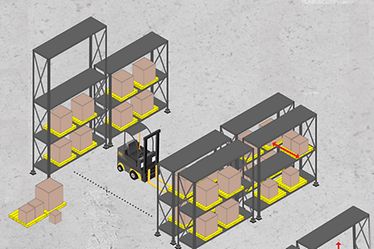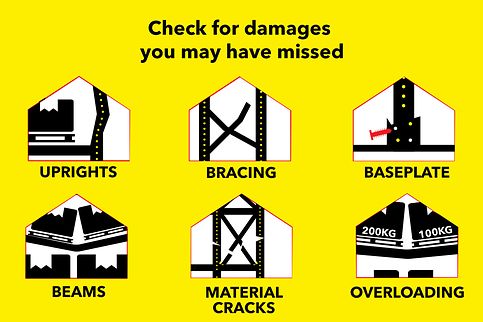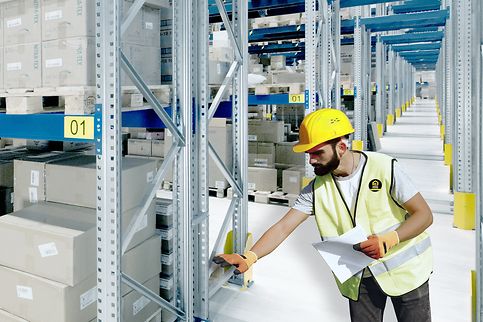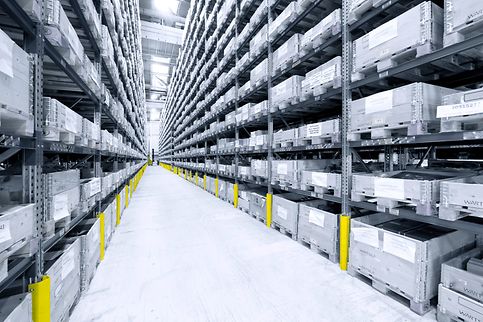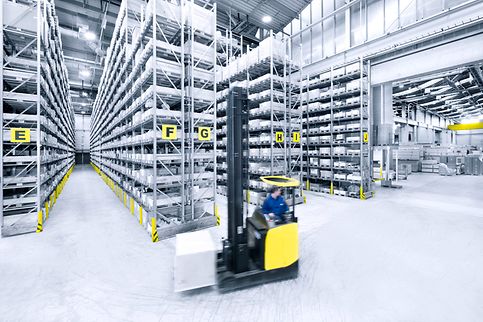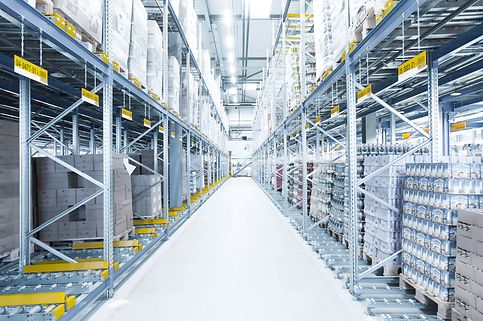Optimize warehouse space effectively and safely
Your warehouse has maxed out, so what should you do next?
Finding a bigger unit is one option - but not the only one OR can you make better use of your existing facility? While both options require effort and planning, the latter can be more rewarding.
Should you decide to go down this path, where do you start and how do you begin?
First, start by knowing your storage profile. Thoroughly understand the flow and utilization of the current layout, which include the rack configuration, slotting/pick philosophy, receiving, replenishment, inventory management, packing and shipping. Not to forget the seasonal peak trends, you will also need to do a thorough volume analysis of the inbound and outbound product flow.
Next, look at the existing facility. Can you:
Optimize the ceiling height?
Does the ceiling height allow you to extend upwards without compromising safety? While floor space may be limited, going upwards can expand your storage capacity. There are storage systems that will enable you to build up and take advantage of the warehouse vertical height (air space) without sacrificing on efficiency. For pallets storage, you can consider Very Narrow Aisle (VNA) Pallet Rack systems, which can extend more than 17 meters high. For small parts storage, there are vertical lifts (SSI LOGIMAT®), modular systems that can extend up to 20 meters high.Maximize the depth?
To make effective use of space, not only does the height of the racking system matter, you should also consider the depth. If you have several pallets for each SKU, you can consider installing a Push Back Racking, a last in first out (LIFO) system which can boost the storage capacity by up to 90% as compared with a Selective Racking System. As a pallet is loaded from the front, it pushes the pallet behind by one position. The reverse happens when unloading. When the front pallet is removed, the rear pallets automatically move forward to the front picking position. By storing products 2-5 pallets deep through a single pallet position, you can multiply the storage density quickly.Add a mezzanine?
One of the fastest ways to create additional space within the warehouse is to add a mezzanine or a raised storage platform if your building layout and flooring structure permits. One, two or even three levels high, it will allow you to optimize the empty overhead space into usable storage areas. You can also use it for work functions such as packaging or shipping preparation.Reconfigure your current storage design?
With changes in products and SKUs mix, rack reconfiguration is necessary. Continuing to use the racking system when the configuration no longer applies may result in less than optimal warehouse performance. While warehouse redesign may sound costly, it is an investment that should pay for itself in a short period of time. If you are uncertain about what option to take, you can speak to our warehouse experts for a free consultation.Review the aisle widths?
Productivity, space utilization, flexibility, safety and equipment are some of the key considerations in determining the appropriate aisle width. Design the aisle width with the best match to the material handling equipment (Eg. forklift). You may have to build in some buffer for overhanging pallets, which are quite common in warehouses, as well as hiring experienced forklifts drivers. Consult your racking and material handling equipment suppliers for advice.Manage the inventory?
Understand the company’s inventory, what products it has in stock, how much materials passes through the warehouse, and the inventory turns, i.e., how often inventory is sold and leaves the warehouse in a given period. Unsold stocks are costly for the company, and they occupy space in the warehouse. To manage the inventory and avoid overstocks, talk to the sales and production staff as well as customers to understand their buying behavior.Practice Just In Time (JIT)?
By receiving goods only when they are needed is to keep up with the JIT concept, you can increase warehouse efficiency and reduce your inventory carrying costs. You may want to explore this possibility with your regular suppliers.Embrace good housekeeping.
Good housekeeping is a virtue that is often overlooked. By ensuring everything is in its right place, the warehouse functions much more effectively and productively. It is also a lot safer, as it is easier to spot and remove hazards that can cause slips, trips or falls, some of which are the leading causes of warehouse accidents. Efficiency and safety are intertwined. With a safe working environment, there are less lost workforce hours, damaged stocks and machine repairs.
